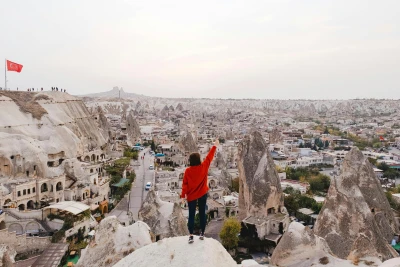
Popular Categories
See AllBien Cappadocia specializes in private tours, hot air balloon rides, luxury accommodations, and unforgettable cultural experiences across Cappadocia, Istanbul, and the Mediterranean region.
You can easily book your tour or experience directly through our website. Simply choose your preferred activity, select your date, and complete the secure online booking process. Need help? Our team is happy to assist you!
Yes, all of our tours include comfortable, air-conditioned transportation. We provide pick-up and drop-off services from your hotel or a designated meeting point.
Cappadocia is beautiful year-round! However, the best times are typically spring (April–June) and fall (September–November) when the weather is mild, and the landscapes are vibrant.
Absolutely! We work with licensed and highly experienced pilots who prioritize safety above all. Balloon flights are weather-dependent to ensure optimal safety and comfort.
Yes! At Bien Cappadocia Travel, we pride ourselves on offering fully customizable tours. Tell us what you’re dreaming of, and we'll create a tailor-made itinerary just for you.
We recommend wearing comfortable clothing and sturdy shoes, especially if you plan to explore valleys and historical sites. In cooler months, bring a jacket, especially for early morning activities like balloon rides.
Definitely! Many of our tours and activities are family-friendly. We can also customize experiences to suit families with young children.
Yes, we offer tours in several languages, including English, Turkish, Spanish, and Russian. Let us know your preference when booking!
You can reach us via our contact form on the website, send us an email at [info@biencappadocia.com], or call us directly. Our team is available to assist you 24/7.








 1 Night 2 Days
1 Night 2 Days

























